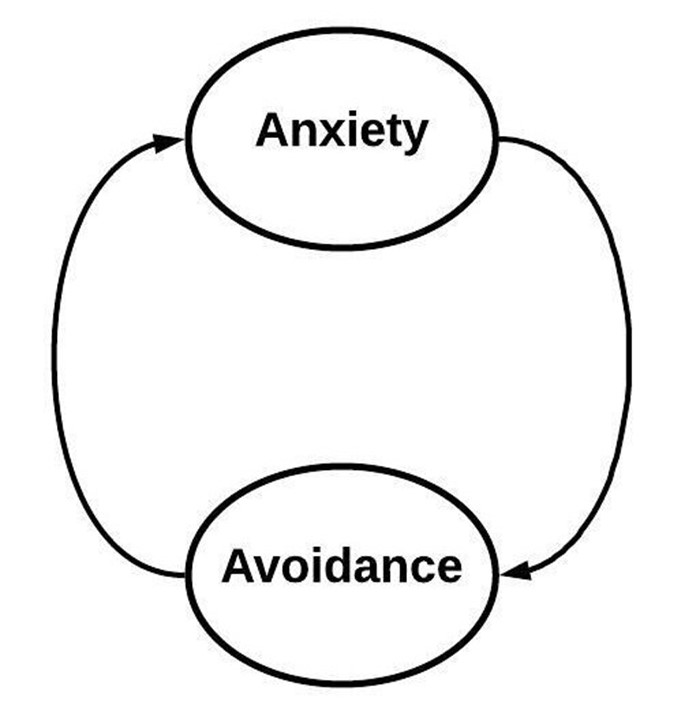
Anxiety and avoidance coexist in a self-reinforcing feedback loop.
You feel anxious about a task, so you avoid it. But now it feels even harder to get started. And have even less time to finish. So you get more anxious, making you even more inclined to avoid the task.
How do you get out of this downward spiral?
It would be nice if you could snap your fingers and stop feeling anxious, but we all know that’s not an option. We have no direct control over our emotions.
But you can influence your emotions indirectly by changing your behaviors. (You can also influence your emotions by changing your thoughts, but this is much harder.)

The way out of this downward spiral is to turn avoidance into action.
When anxiety says, “You can’t do this,” start the task anyway. Starting sends a signal to your brain that you can do it. And this signal is far more powerful than any positive self-talk you might engage in. Actions speak louder than thoughts.
The anxious thoughts you have while avoiding the work are what I call “the thinking cost of procrastination,” and they are a major source of unnecessary suffering.
What if the work isn’t good enough? What if I don’t finish on time? I’m such a lazy piece of crap!
The best way to fight these thoughts is to keep your eyes on the process, not the product. In other words, get to work and don’t judge the quality of your efforts.
The resistance you feel makes you want to avoid the task, but that’s the opposite of what would help. Resistance is actually a compass that points toward what you most need to do. Approach rather than avoid. Don’t wait for motivation; make your own.
Because it won’t feel better until you start.
